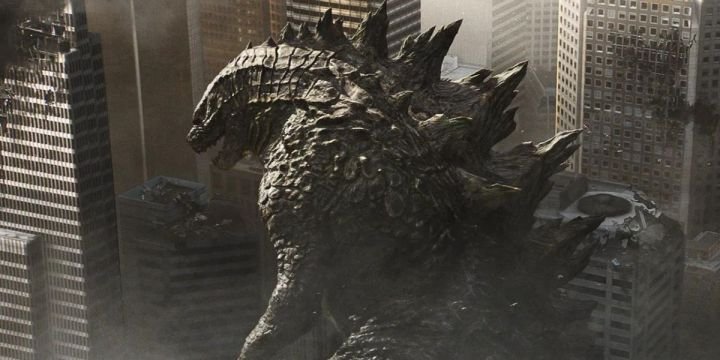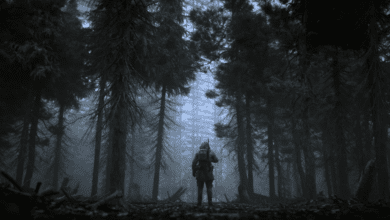Why Aren’t There More Monster Movies? An In-Depth Look at Hollywood’s Overlooked Genre
Hollywood’s obsession with specific film trends is nothing new. From superhero flicks dominating the box office for over a decade to the vampire, zombie, and slasher crazes that came before them, the film industry often finds a popular genre and runs with it until the wheels fall off. Even formulaic rom-coms and feel-good Christmas movies are churned out year after year with little to no change in their structure. With Hollywood’s apparent love for repetition, it raises the question: why aren’t there more monster movies?

The Appeal of Monster Movies: More Than Just Cheap Thrills
Let’s face it—monster movies are just plain fun. They provide a unique blend of suspense, horror, and often, a splash of dark comedy. They allow viewers to escape reality and dive into worlds where unimaginable creatures roam free. Despite the intense realism that many genres strive for, sometimes audiences crave something more fantastical and less grounded. After all, how many gritty dramas or thought-provoking noirs can one person watch before they yearn for something more explosive, colorful, and downright epic?
When they do come around, monster movies often prove to be quite profitable. Take Anaconda (1997), for instance. Even with its relatively modest budget and the mixed critical reception, it still managed to pull in over $136 million, which would be around $266 million today. Clearly, there’s an audience hungry for more. So, what’s holding Hollywood back?
The Monsterverse Effect: A Profitable Blueprint
For a stretch of time in the 2000s and early 2010s, monster movies seemed to have lost their footing in mainstream cinema. Only a few titles like The Mist (2007) and Cloverfield (2008) stood out, but they were exceptions rather than the rule. Cloverfield, in particular, shattered expectations with a $46 million opening weekend, marking the biggest January premiere ever at that time. The movie’s success indicated that there was indeed a market for these films. So, why didn’t Hollywood capitalize on it sooner?
It’s possible that Cloverfield was simply ahead of its time. In 2008, the cultural zeitgeist was far more fascinated with vampires (Twilight) and zombies (True Blood). Hollywood, in its usual fashion, decided to stick with the trends that were already hot rather than venture into uncharted territory with a monster movie revival. However, things began to shift with the release of Pacific Rim in 2013. Guillermo del Toro’s ode to giant monsters (Kaiju) versus giant robots (Jaegers) was a moderate success domestically but a massive hit worldwide, once again proving that monster movies could yield significant returns.
Fast forward to 2014, and the release of the Godzilla reboot, which grossed nearly $525 million globally and gave birth to the Monsterverse. With subsequent releases like Kong: Skull Island and Godzilla: King of the Monsters, Hollywood finally seemed to grasp that monster movies were both popular and profitable. To date, the franchise has grossed over $2.5 billion, with spin-off streaming series like Monarch: Legacy of Monsters and Skull Island adding to its expanding universe. Even Japan’s Toho Studios has revived its beloved Godzilla series with modern hits like Shin Godzilla (2016) and Godzilla Minus One (2023).
Despite the Monsterverse’s success, the broader monster movie genre has not seen a significant resurgence outside of Godzilla and King Kong. Why is that?
A Genre with Deep Roots and a Rich History
Monster movies aren’t a new phenomenon. They’ve been a staple of cinema almost since its inception. The genre has deep roots in the early days of Hollywood, with classics like The Wolf Man (1941), King Kong (1933), and The Mummy (1932) laying the groundwork for decades of monster-centric storytelling. Even earlier, silent films like The Golem (1915) captured audiences’ imaginations. Since then, monsters have continued to captivate audiences through various cult classics like Creature From the Black Lagoon (1954), Alien (1979), and John Carpenter’s The Thing (1982).

Given this rich history, it’s perplexing that more studios aren’t reviving these beloved monster franchises or creating new ones. Hollywood has no shortage of intellectual property (IP) when it comes to monster movies. So, what’s stopping them?
An Untapped Goldmine of Monster Movie IPs
One potential explanation for Hollywood’s hesitance to dive back into the monster movie pool is its current obsession with sequels, reboots, and adaptations. In recent decades, the entertainment industry has become increasingly risk-averse, favoring familiar content over original ideas. Yet, if Hollywood is so keen on sticking with what’s proven to work, why not delve into the treasure trove of monster movie IPs that are just waiting to be revived?
There are numerous classic monster movies that have never seen sequels or haven’t been revisited in decades. Films like Tremors, The Descent, and Dog Soldiers have all developed cult followings, yet Hollywood has largely ignored them. Even Cloverfield, despite its success, never received a true monster-centric sequel. Instead of greenlighting yet another superhero reboot, why not give these monster movies a second chance?
Signs of a potential revival are already on the horizon. Hulu’s Prey, a new installment in the Predator franchise, was a massive hit, and Alien: Romulus has also garnered positive buzz. Even the Jurassic World franchise, a modern-day revival of the Jurassic Park series, has proven that reimagined monster movies can be more profitable than their originals. What more proof does Hollywood need that monster movies are worth the investment?
Are We on the Verge of a Monster Movie Renaissance?
There is hope on the horizon for monster movie fans. The success of the Monsterverse has undoubtedly sparked renewed interest in the genre. New Godzilla films are in development, and Universal Studios is investing in its Dark Universe land at the upcoming Epic Universe theme park, which will celebrate classic monsters like Dracula, Frankenstein’s monster, and the Wolfman. Additionally, Universal has plans to reboot several of its iconic monster franchises, suggesting a potential revival of interest in these timeless tales.

Moreover, the success of recent and upcoming films like Prey, Alien: Romulus, and the new wave of giant shark movies (The Meg, 47 Meters Down sequels) hints at a changing tide. Could this be the beginning of a new monster movie craze? Are we on the cusp of a genre renaissance? Only time will tell.
Conclusion: Embracing the Monster Within
In a world where the entertainment industry often plays it safe, monster movies offer a refreshing change of pace. They’re thrilling, imaginative, and full of potential for both storytelling and visual spectacle. Hollywood, take note: there’s a growing hunger for more monster movies. With a rich history and a proven track record at the box office, this genre deserves its time in the spotlight. So, let’s unleash the monsters and give audiences the larger-than-life experiences they crave. After all, who wouldn’t want to see more giant creatures stomping through our cities, stalking our nightmares, and reminding us of the thrilling, terrifying, and sometimes hilarious possibilities of the unknown?





